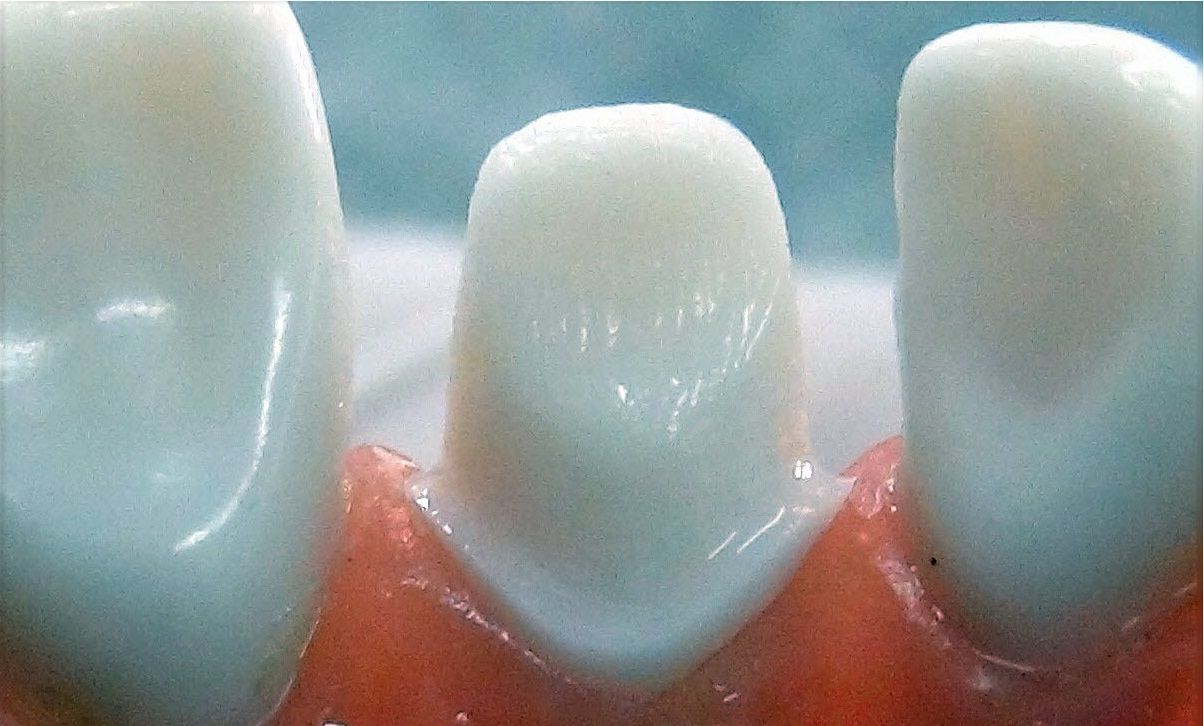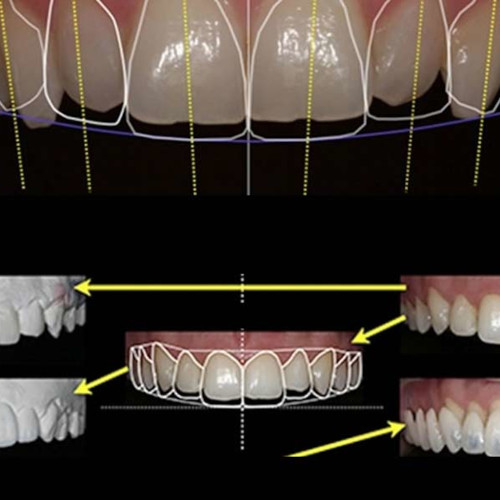Dental crowns
Function and Purpose
A dental crown replaces the visible upper part of the tooth, restoring function and aesthetics. When placed on a natural tooth, it is fixed by cementation, either directly on the tooth or on a pivot (inlay core or pinlay) if the tooth is significantly damaged. For crowns on dental implants, the crown is typically screwed in for stability.
Dental crowns can be either definitive or transient, depending on whether additional treatment for the gum or pulp is required. The placement of a dental crown serves multiple purposes, such as restoring a damaged tooth or improving the aesthetic appearance of a smile.
The process of fitting a dental crown involves several phases, with the timeline varying based on the crown’s manufacturing location and any additional care needed to ensure optimal results.
The fitting of a dental crown is divided into several phases, the completion time of which may vary depending on the place of manufacture of the dental crown and the additional care required.
The first phase involves filing down the tooth to create a stump capable of supporting the future crown. If necessary, complementary procedures such as cavity treatment, tooth devitalization, or heavy metal decontamination may be performed. At Anveli Dental, dentists prioritize preserving the natural tooth’s vitality, supported by studies on the toxicity of devitalized teeth.
An impression of the tooth is then taken, either using the traditional method (biting into a mold) or with an intraoral scanner, the latter offering greater precision and comfort and completing the procedure in under a minute. To protect the prepared tooth, a provisional crown is placed, particularly when the tooth remains alive, ensuring the patient experiences no discomfort.
Between the preparation and fitting stages, the laboratory begins creating the dental crown. Crowns are crafted either manually or using advanced computer-aided design and robotic cutting technology, as used in Anveli Dental® clinics, ensuring precision and quality.

The second phase occurs 4 to 5 days after the natural tooth has been prepared. During this stage, the dental crown is tested for fit and comfort. Minor corrections can be made in the mouth, while more significant adjustments are performed in the laboratory. Once finalized, the crown is permanently fixed by cementation. The process may take several hours if multiple crowns are being placed, as each contact point must be carefully adjusted to achieve perfect occlusion.
For patients with bruxism (teeth grinding), a night splint may be recommended to protect both the natural teeth and the crown from damage. Thanks to the in-house dental prosthesis laboratories at every Anveli Dental clinic, both treatment phases can be completed in just one week, ensuring precision and efficiency.

The price of a dental crown depends largely on the material used, the country in which it is placed, and the place where it is made. A zirconia dental crown in France costs between € 500 and € 1,500. Dentists in France have their crowns manufactured abroad in order to lower the cost of production. The price of a dental crown in Anveli Dental clinics is:
| Suisse (Anveli Dental®️) | Bulgaria (Anveli Dental ® ️) | Serbia (Anveli Dental ®) | Ukraine (Anveli Dental ® ️) | |
|---|---|---|---|---|
| Ceramic metal crown | 1000€ | 250€ | 250€ | 200€ |
| Zirconia crown | 1200€ | 300€ | 295€ | 295€ |
| Crown Press E-Max | 1800€ | 350€ | N/A | N/A |
The difference in prices between our different dental clinics is mainly due to the cost of infrastructure and tax rates. All dental crowns offered by Anveli Dental are manufactured on-site with the best quality Swiss materials and allow adjustments and corrections throughout the process.
The dental crown has been reimbursed up to 120 € by social security since January 1, 2020 regardless of the materials used. The share of coverage by the mutual depends on each organization. For more information, ask for your dental quote and send it to your health insurance company. Dental crowns performed in Anveli Dental clinic are reimbursed by social security in France and Belgium as specified in decree n ° 2005/386 of 19 April 2005 relating to the coverage of care received in a European Union country.
Reimbursement of dental treatment abroad
CPAM rating of a dental crown HBLD036, HBLD037, HBLD038, SPR50
CPAM name of a dental crown
Old: Placement of a ceramic-metallic dental crown, ceramic or mineral equivalent or in mineral equivalents. Since January 1, 2020: Placement of a monolithic ceramic tooth-supported dental crown (zirconia) on a tooth other than a molar . Placement of a tooth-supported ceramic metal crown on an incisor, a canine or a first premolar.
CCAM support
107.50 € – CCAM
375.00 € – CMU
The materials used for a dental crown depend on the available budget, the function, and the tooth on which the crown is placed. For front teeth, Press Emax (all ceramic) will be recommended while for molars and premolars zirconia will be the best solution. Ceramic metal is the cheapest variant but has many disadvantages. (Discoloration of the gum, electrically conductive, weight, aesthetic …) Resin or acrylic are used for temporary or temporary dental crowns.
For cosmetic dental care, the question often arises between the installation of dental veneers or crowns. The price of the two procedures being substantially identical, the question can be decided after a precise diagnosis concerning in particular the occlusion. If the chewing forces on the front teeth are too pronounced, it will be advisable to place crowns that will cover the entire tooth. If the teeth are not sufficiently well aligned, the dental crown may also be preferred. The dental veneer will be preferred when the teeth are sufficiently well aligned and the occlusion allows it.
Anveli Dental has its own AnveLab laboratory. It is located within the clinic itself. The crowns are made in front of the patients since the laboratory is located in front of the waiting room behind a bay window. This is the concept of Anveli Dental transparency.
The manufacturing of dental crowns has evolved a lot in recent years. It is even the field of activity of dentistry that has evolved the most. Whether it is dental prostheses in implantology or for the treatment of natural teeth, the work of a technician is now more akin to that of a computer scientist. Although there are still laboratories where dental crowns are made by hand, the use of scanners and CAD-CAM (3D printing system) has made it possible to obtain precision levels of the order of a micron. Anveli Dental works with the most modern robotic systems for several types of materials. The E-max ceramic press for the ceramic crown, the CAD-CAM for the zircon and the ceramic bi-composite, and the 3D printer for the provisional teeth.
The fitting of a dental crown is an act without major risk however it requires a good realization in order to guarantee the durability of the tooth in the future. Indeed, in the event of bad fixation or bad realization of the dental crown, the tooth can be permanently damaged. For this reason, Anveli has a laboratory within the dental clinic where the patient can perform the tests and measurements necessary for a perfect realization of a dental crown. Anveli Dental also has 3D equipment in order to produce dental crowns without metal or allergenic materials.
Dentists who practice basal implants in France The basal implantology in France, which consists of...
The placement of one or more dental implants involves risks. As with any dental, medical...
Dental implants: Rejection and loss The main cause of rejection of a dental implant is...